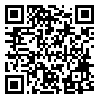دوره 3، شماره 1 - ( 12-1399 )
جلد 3 شماره 1 صفحات 36-27 |
برگشت به فهرست نسخه ها
Download citation:
BibTeX | RIS | EndNote | Medlars | ProCite | Reference Manager | RefWorks
Send citation to:



BibTeX | RIS | EndNote | Medlars | ProCite | Reference Manager | RefWorks
Send citation to:
Limbu J H, Subba S, Gurung J K, Tumbahangfe J, Subba B R. Correlation of fish assemblages with habitat and environmental variables in the Phewa Khola Stream of Mangsebung Rural Municipality, Ilam, Nepal. JAD 2021; 3 (1) :27-36
URL: http://jad.lu.ac.ir/article-1-109-fa.html
URL: http://jad.lu.ac.ir/article-1-109-fa.html
Correlation of fish assemblages with habitat and environmental variables in the Phewa Khola Stream of Mangsebung Rural Municipality, Ilam, Nepal. مجله تنوع جانوری. 1399; 3 (1) :27-36
چکیده: (9945 مشاهده)
We assessed the correlation of fish assemblages with habitat and environmental variables temporally from July and October, 2019 and January and April, 2020 across 5 study sites in the Phewa Khola stream of Mangsebung Rural Municipality, Ilam, Nepal. We sampled 3571 fish representing 13 species, belonging to 3 orders, 4 families, and 9 genera. An analysis of similarity (ANOSIM) indicated that there is a significant difference between the fish assemblage structure in space (R= 0.833, P= 0.001) but not in time (R= -0.148, P= 0.985). Our habitat study showed that glides, runs, pools and deep pools are the primary habitats contributing to the maximum diversity in the Phewa Khola stream. The canonical correspondence analysis (CCA) affirmed that variables such as pH, water temperature, water velocity, total hardness and dissolved oxygen play an important role in shaping fish species distribution. Results from the similarity percentage analysis (SIMPER) hinted that, 67.08% similarity was found between the months and the major contributing species were Schistura multifasciata (20.61%), Devario aequipinnatus (16.48%), Schistura rupecula (15.65%), Garra annandalei (15.36%), Schistura horai (7.74%), Schistura scaturigina (5.91%), Schistura savona (5.74%), Schizothorax plagiostomus (4.37%), Channa punctata (3.9%), Puntius terio (1.9%) and Neolissochilus hexagonolepis (1.39%). On the contrary, a 76.23% similarity was found between the sites and the major contributing species were Schistura multifasciata (21%), Devario aequipinnatus (16.8%), Garra annandalei (15.89%), Schistura rupecula (15.38%), Schistura horai (7.7%), Schistura scaturigina (5.66%), Schistura savona (4.9%), Schizothorax plagiostomus (4.4%), Channa punctata (3.97%), Puntius terio (2%) and Neolissochilus hexagonolepis (1.43%). Ongoing road development, micro-hydropower generation, the use of poisonous herbicides, illegal electro-fishing, deforestation and water diversion are all found to be major threats to the present fish species of the Phewa Khola stream.
نوع مطالعه: مقاله پژوهشی اصلی |
دریافت: 1399/9/21 | پذیرش: 1399/11/4 | انتشار: 1400/3/3
دریافت: 1399/9/21 | پذیرش: 1399/11/4 | انتشار: 1400/3/3
| بازنشر اطلاعات | |
 |
این مقاله تحت شرایط Creative Commons Attribution-NonCommercial 4.0 International License قابل بازنشر است. |





